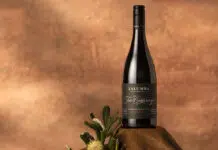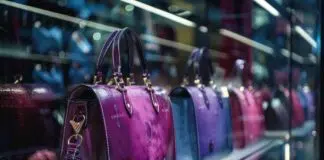You’re at a party. A band is playing dance tunes while people chatter about plans for the New Year. In the corner, mostly unheard, a voice from the television brings you the festivities for Times Square. A waiter in a white roundabout jacket hands you a glass to toast the New Year. But this isn’t your everyday wine. This is gold in a glass. This is champagne and not just any champagne, but a 1995 Dom Pérignon Rosé. After all, if you are going to give wishes for the best New Year possible what better to toast with?
What is it about champagne that fascinates us? Maybe it’s the ceremonial nature of the libation or maybe, like an old Taittinger advertisement, the image of beautiful women in slinky black dresses comes to mind. Whatever it is; champagne has left an indelible mark on the world.
In the rich history of wine, champagne is a relative latecomer. As we all know, the wine was a staple even in ancient Greece and in Egypt of the pharaohs. Champagne as we know it only dates to the 17th century. The bubbly wine was, at first, something not to be encouraged. In 1688, Pierre Pérignon was appointed to oversee and refine the winemaking process to offer an alternative to the heavy red Burgundy wines popular with the French court. However, he did not invent sparkling wine.
While our intrepid monk never conquered the “problem” of the excess carbon dioxide, he came up with a white wine that stood up to the bubbles and was well received by the French royalty. The good monk reportedly said when he perfected his technique, “Come Quick! I’m tasting the stars!” Thus legends are born. In fact, the premier champagne house of Moët & Chandon honors Dom Pierre Pérignon in their best-known label.
So what exactly is champagne? Legally it is sparkling wine from that area of France and is protected by French law and indeed by most countries in the world. The United States is an exception to that rule. The United States Senate did not ratify the treaty of Versailles. You’ll note that I did not say white wine. Although most champagne is classified as a white wine, in fact, there are usually three grape blends used to make the wine. Chardonnay, Pinot Noir, and Pinot Meunier are the most commonly used grapes. The third most expensive wine in the world is Dom Pérignon Rosé 1995 at around $350 a bottle. Nineteenth century champagne was noticeably sweeter than it is today. In 1846, Perrier-Jouët decided not to sweeten that year’s vintage for export to Britain. Thus brut champagne was introduced. The Champagne region winemakers have developed a comprehensive set of rules and regulation to protect their economic interests.
When many people think of champagne, they think money and indeed some of it can be very expensive. Excluding hard to find or exotic vintages, the top three in terms of cost are: Dom Pérignon Rosé 1995 as I mentioned above at number three. Number two is Bollinger Blanc de Noirs Vieilles Vignes Françaises 1997 at $400 a bottle, and the number one champagne in terms of expense is Krug Clos du Mesnil1995 costing $750 according to Forbes Magazine. The Clos du Mesnil cost more than my first car did.
Now that we’ve purchased the Krug Clos du Mesnil 1995 how do we serve it to best advantage? In the movies, the bottle would be opened with a flourish and a loud pop as the cork was loosed. That makes for great sound effects, but we’ve seen the resulting waste of wine. The cork should be eased off to avoid losing the carbonation. The wine should be chilled to approximately 43-48º Fahrenheit. Chill your champagne in cooler half filled with water and half with ice for a half hour or so. Champagne is best served in flutes instead of the bowl-shaped champagne cups. Though the cups are traditionally associated with the drink, the champagne flute retains the bubbles and the flavor of the wine more effectively. When tasting champagne a big red wine glass may be used as this allows the aroma to spread better. When serving, fill the champagne flute 2/3 full or the big red wine glass ½ full. We all know champagne is good for the soul but what about the body?
Research has shown that in moderation the high amounts of anti-oxidant polyphenols in sparkling wine may help reduce the deterioration of brain cells due to oxidative stress and help the brain to cope with Alzheimer’s, stroke and Parkinson’s disease. Ladies and Gentlemen, charge your glasses!
Finally, sometimes you want something different. Champagne is featured in several cocktails, and I’m going to share some of them with you. Hopefully, if you know the cocktail, I might impart some trivia to go with it. Let’s start with two favorites that I’m sure we’re all familiar with. The champagne cocktail is a simple concoction to create. Place a cube of sugar in a champagne flute. Add a dash or two of Angostura bitters. Carefully fill the glass with dry champagne, add one teaspoon of brandy and garnish with a cocktail cherry.
The other well-known cocktail is the Mimosa. Mix three parts chilled champagne in a flute with two parts of chilled orange juice. Garnish with cherries and grenadine if desired. Mimosa is usually served with morning brunch and in first-class accommodations on most airlines. The drink was reputedly invented in 1925 at the Ritz Hotel in Paris. If you want to make a Grand Mimosa add a tablespoon of Grand Marnier to the mixture. The British drink, Buck’s Fizz is very similar in composition.
No nation suffered the ravages of World War One more than France. In the grim days of that conflict aerial warfare was born. Raoul Lufberry is renowned in both French and American aviation circles as one of the premier fighter pilots of that war. Eddie Rickenbacker credited him with inventing the Lufberry circle, which is still used for controlling multiple takeoffs and landings at airports throughout the world. In addition the famed flier left us a drink as potent as his flying skills. Raoul liked his champagne but was looking for something with a bit more horsepower. Mixing it with cognac, which was readily available it was reputed to have a kick like the vaunted French 75 millimeter artillery piece. Today the French 75 is served in either a Collins glass or a champagne flute. Pour two parts of gin in a flute filled halfway with champagne. Add sugar and stir. Make sure the flute or glass is not full yet as the mixture will fizz up. Add the juice of half a lemon and top off with champagne. The drink is also called a “Soixante-Quinze” in France.
To make a Ruby Dutchess combine one part of pomegranate juice and two parts of champagne in a flute. The drink is named for Dutchess County in New York State.
I hope you’ve enjoyed our all too brief look at champagne. The barman is calling and he bears an uncanny resemblance to Raoul Lufberry. Salut!





